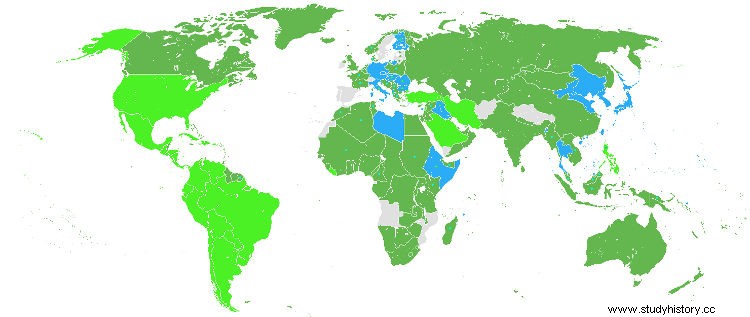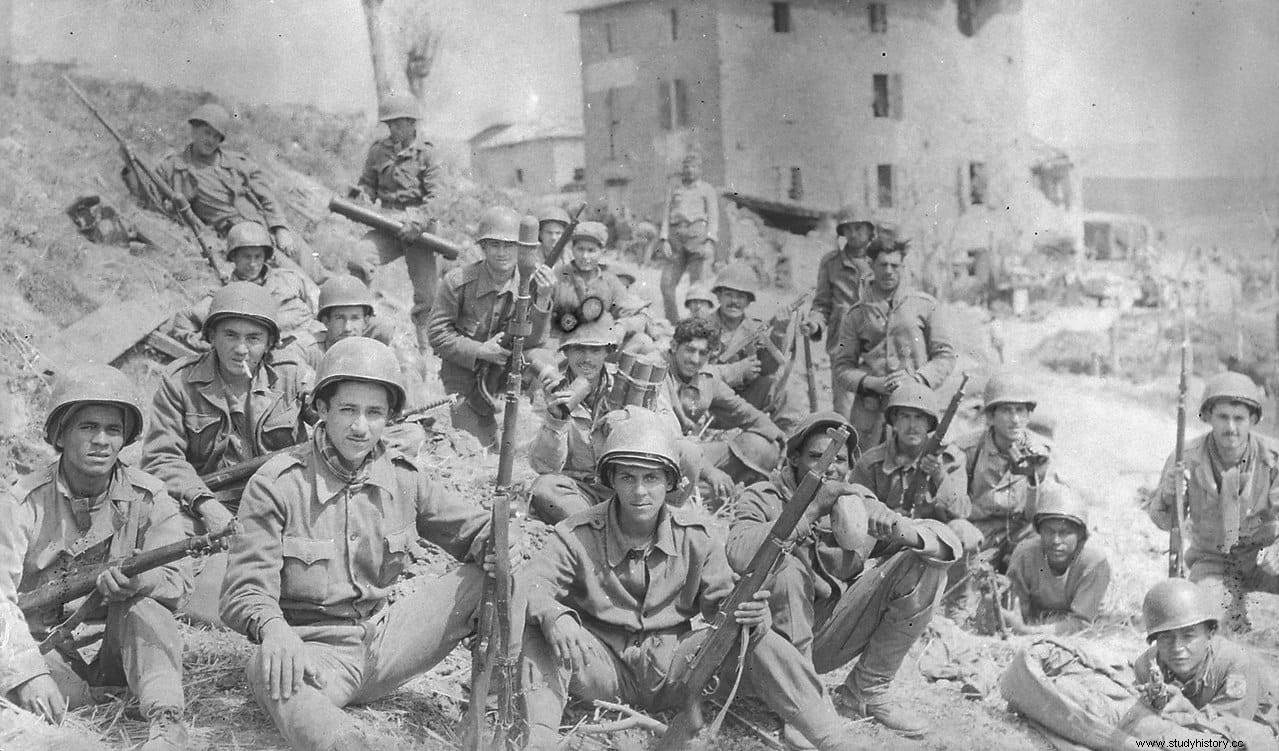The possibility that Brazil entered World War II Together with Germany, the United States was very concerned, due to its probable impact on Atlantic shipping and the geographical location of the South American country, which represented an immense potential strategic base for the Axis. This led the US military to design a preventive invasion plan which was baptized with the name of Plan Rubber , alluding to rubber, one of the main Brazilian products.
Actually, this approach was first embodied in the so-called Rainbow Plan (1939), which sought to militarily secure the northwest of Brazil because that area notably shortened the travel distance between America and Africa, apart from being a stopover in the direction of the Pacific. The fact that at the head of the Brazilian government was a fascist dictator, Getulio Vargas , and that in 1941 it had denied the United States the establishment of its soldiers in bases on its territory, due to the North American and British obstacles in supplying the weapons with which to modernize its backward army (which the Germans offered to do more efficiently ), made the situation even more tense despite the fact that relations between the two nations had been cordial since the previous century (Brazil even participated in the First World War on the allied side).
In reality, the Brazilian military was divided between allyphiles (especially the navy and air force) and Axis supporters (Army and especially the one from the south, which was where the bulk congregated to defend the borders and where most of the 1.5 million Brazilians of German descent resided).

For all this, after the attack on Pearl Harbor and, above all, when a Nazi plot came to light in Uruguay, the drafting of the Joint Basic Plan for the Occupation of Northern Brazil, Serial 737 of 21 December 1941 was commissioned. , abbreviated as Plan Rubber, according to which the marines would be in charge of occupying the airfields from Natal, Salvador de Bahia, Belem, Recife, Fortaleza and Fernando de Noronha (an island in the middle of the ocean where, moreover, it was feared that the German navy would set up a base for its U-boats).
The plan included artillery cover for the battleship USS Texas and the aerial bombardment of the units of the aircraft carrier USS Ranger . The forces destined for the assault were the 1st and 5th Marine Divisions plus the 9th Infantry Division, which even carried out a simulation in Virginia , by the way, with disastrous results in all aspects; there was a lot to correct if it was decided to put it into practice, lest the operation end badly.
Because theory was one thing and practice another. Except for Salvador, which had great beaches, the rest of the sites had too small beaches and strongly beaten by the sea or evenreef belts that they would hamper any amphibious operation, forcing launches to leave ships a huge distance from shore (up to 9 miles); not to mention the fact that the disembarkation points were very far from the cities and, therefore, from the airports, which were the objective after all. And then there was the orography , which would be another problem because urban areas used to be surrounded by easily defensible hills.

And that what Brazil had to oppose was little and outdated :a couple of battleships, 2 light cruisers, 9 destroyers, 3 submarines and other smaller ships, in addition to 330 planes, mostly obsolete and inferior to those of neighboring Argentina and Peru. As for ground troops, it could mobilize a total of 15,700 soldiers in the area in addition to those transferred from the south -with many problems, given the poor communications and the territorial immensity-.
Likewise, the coastline was studded with sporadic and irregular defensive installations with 75mm cannons and machine guns; Fernando de Noronha, on the other hand, only had fifty guards (there was a prison with a thousand prisoners).

In the end it was not necessary to activate the Rubber Plan and, even with push and pull, the diplomacy solved the issue. In December 1941, Undersecretary of State Welles managed to get Vargas to agree to having marines disguised as mechanics in Brazilian airfields with the mission of supervising and preventing the penetration of Nazi agents. In exchange, Roosevelt authorized the export to the South American country of material, instructors and modern weapons to definitely attract their military.
The move was successful, it expanded relations between the two governments and in May 1942 the Mutual Defense Agreement was signed. . The positions had become so close that the United States even asked its new ally to break relations with Germany and Germany acted clumsily by sinking its submarines half a dozen Brazilian ships, which led to the fact that on August 22, 1942 Brazil entered in the war but on the allied side. A Brazilian Expeditionary Force was even formed, made up of 25,300 soldiers who, under US command, fought in Europe participating in the invasion of Italy.
The coat of arms and motto they adopted, the viper smoking , was an ironic response to those who considered it easier to see one smoking that Brazil would enter the war.
